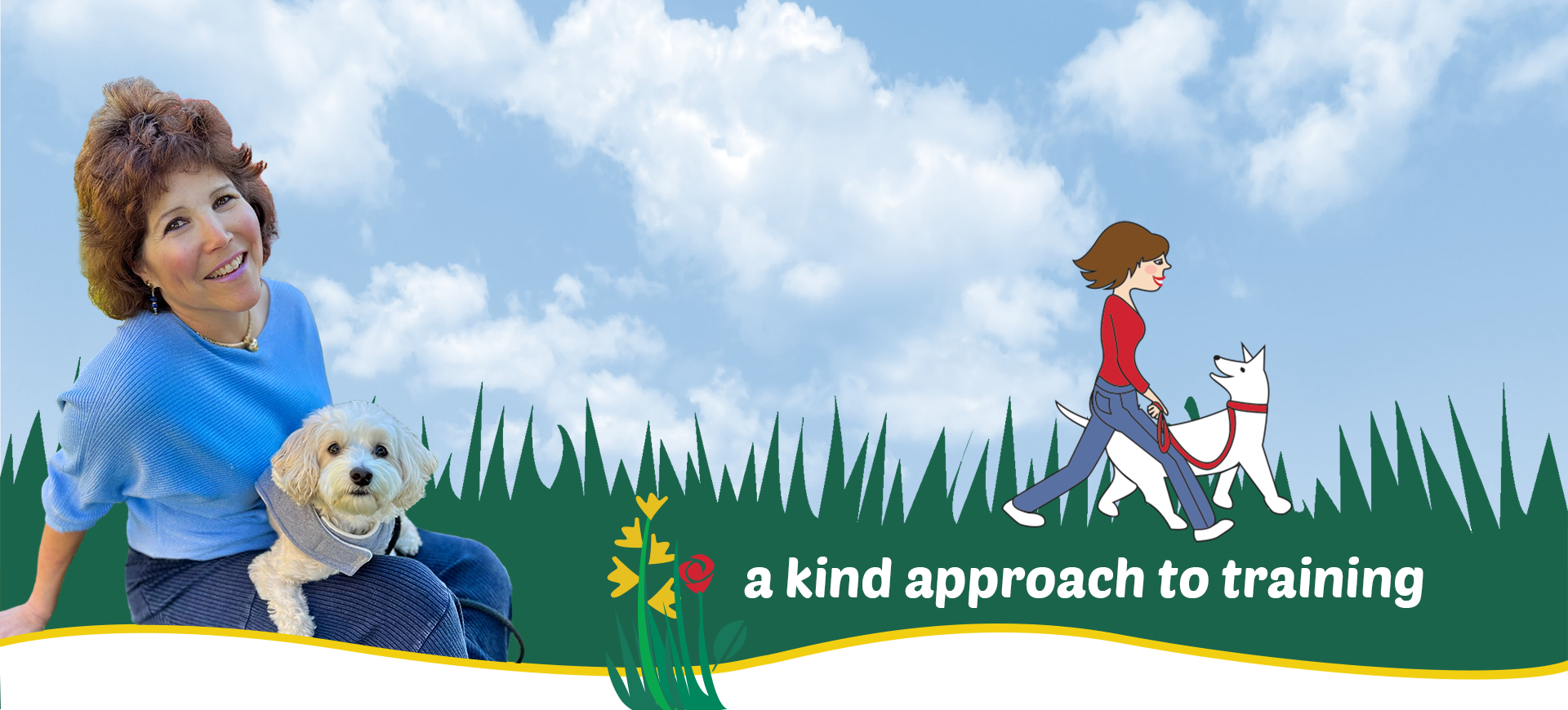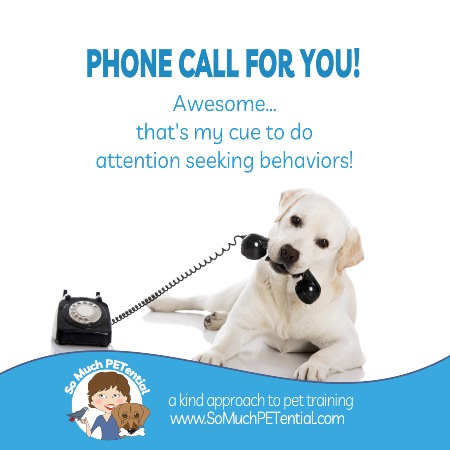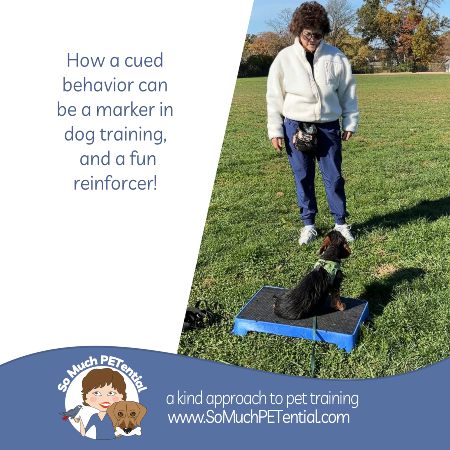In dog training, can you use multiple cues for the same behavior? It is not only perfectly OK to teach multiple cues for the same behavior, it can be very helpful.
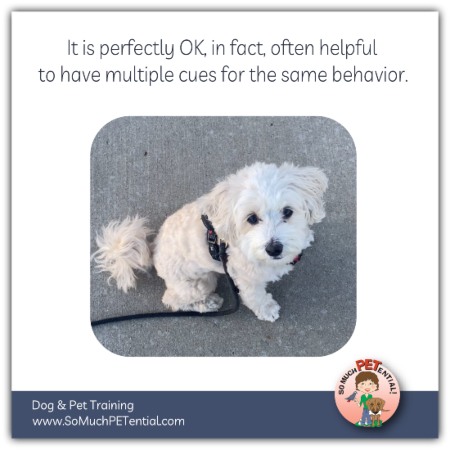 Here are a few of my Dawson’s cues for putting his rear end on the ground.
Here are a few of my Dawson’s cues for putting his rear end on the ground.
Sit (verbal cue)
Wait (verbal cue)
Car (verbal cue)
Palm up hand moving up (visual cue)
Getting out of a car (contextual cue)
A cue (also known as a discriminative stimulus) is something in the environment that prompts a behavior, or sets that behavior into motion. It works because of a learned history between a behavior and a consequence. Think of the cue as a green light that indicates to the animal, the window is open and NOW is the time to act in order to get something of value (a reinforcer).
What ultimately strengthens that cue is the strength of the reinforcer of that behavior to that particular animal.
Think about it this way, when Dawson hears any one of these words SIT, WAIT, or CAR, he knows that IF he sits, THEN something good will happen to him. That good could be the opportunity to continue movement, to go sniff a spot, get attention from me, or a treat.

Here is another behavior example that can be helpful to have multiple cues.
BEHAVIOR:
dog goes to and lays down on mat
CUES:
Doorbell rings
Human goes to the kitchen sink
Why is this helpful? Because in those contexts, the behavior of laying down on a mat can not be done at the same time as jumping on people.
However, from your dog’s perspective, when are wanting your dog to do something else other than jumping on people, you should be giving your dog a really good reason for making the choice YOU want. Therefore, invest the time AHEAD of when you need it, to teach your dog that awesome stuff happens when you go to your mat. Then teach that in different contexts, working up to a lot of distractions. Practice it OVER and OVER until it is habit.
Let’s reverse this from my dog’s perspective. Dawson loves treats. One day I not only laughed at him when I saw him sitting in my dining room chair, I also gave him a treat. (How can I not? He is so cute!) Now I have just let that be our communication. If he is hungry for a snack, he can sit up there for a long time until I notice.
BEHAVIOR:
Lisa gives Dawson a treat
CUE:
Dawson sits in the dining room chair
Here is the thing. We do not even need to actively teach this to our pets (or each other). Any living being is constantly learning by what happens at any given moment. Learning cues for behaviors happens all the time whether we intend to teach or not. And they can also be taught to indicate a negative consequence.
Your dog can learn that coming inside at a certain time of day indicates he may be put in a crate. This may cause your dog to avoid coming inside at that time.
Your dog can learn that when a human picks up the phone, it is a perfect time to do attention seeking behaviors as treats or play are likely to follow.
Your dog can learn that when a leash comes out, barking/jumping/running in circles gets walks to happen.
This is something to be aware of all the time.
If it becomes a problem, you will need to come up with a plan for preventing that pattern from being practiced and possibly teach your pet a different, more acceptable behavior to do instead – that will also get your pet something of value.
Oh wow, did I digress!!
Back to the video, yes, there are many reasons to teach multiple cues for the same behavior. However, only teach ONE cue at a time. Teach that cue to fluency, meaning your dog will reliably do the behavior after the cue. THEN you can practice inserting the NEW cue JUST BEFORE giving your dog the old cue. Practice this about 10 to 15 times.
The next time, you may find that after you give the NEW cue, in anticipation of the OLD cue, your dog will just do the behavior.
BINGO!!
Mark that behavior (with yes, good or click as an example), and then give a reinforcement.
Make it fun!

